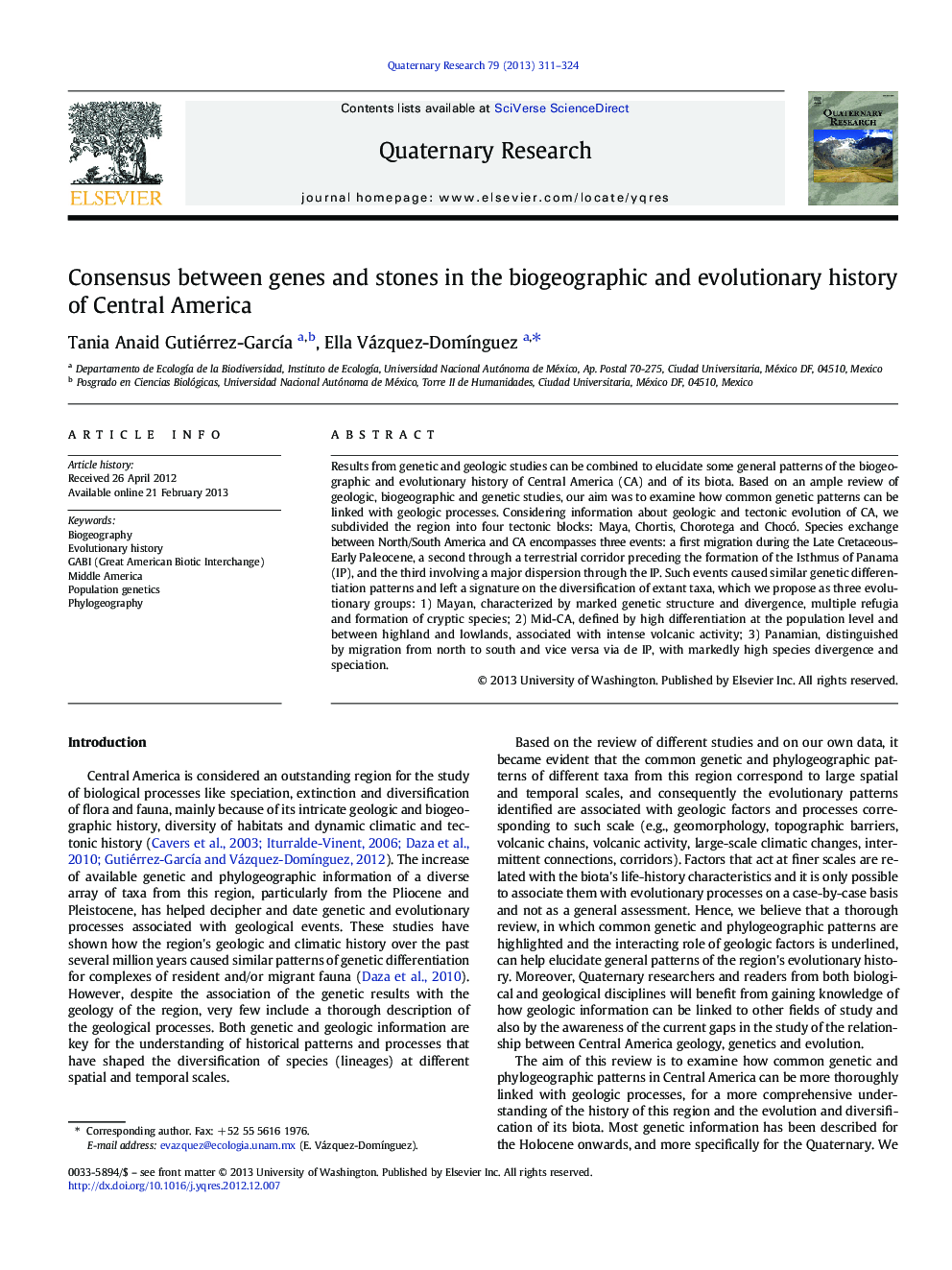| Article ID | Journal | Published Year | Pages | File Type |
|---|---|---|---|---|
| 1045379 | Quaternary Research | 2013 | 14 Pages |
Results from genetic and geologic studies can be combined to elucidate some general patterns of the biogeographic and evolutionary history of Central America (CA) and of its biota. Based on an ample review of geologic, biogeographic and genetic studies, our aim was to examine how common genetic patterns can be linked with geologic processes. Considering information about geologic and tectonic evolution of CA, we subdivided the region into four tectonic blocks: Maya, Chortis, Chorotega and Chocó. Species exchange between North/South America and CA encompasses three events: a first migration during the Late Cretaceous–Early Paleocene, a second through a terrestrial corridor preceding the formation of the Isthmus of Panama (IP), and the third involving a major dispersion through the IP. Such events caused similar genetic differentiation patterns and left a signature on the diversification of extant taxa, which we propose as three evolutionary groups: 1) Mayan, characterized by marked genetic structure and divergence, multiple refugia and formation of cryptic species; 2) Mid-CA, defined by high differentiation at the population level and between highland and lowlands, associated with intense volcanic activity; 3) Panamian, distinguished by migration from north to south and vice versa via de IP, with markedly high species divergence and speciation.
